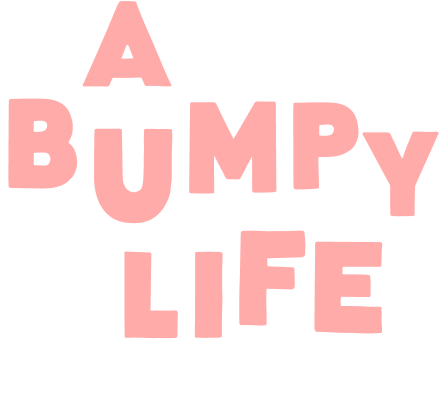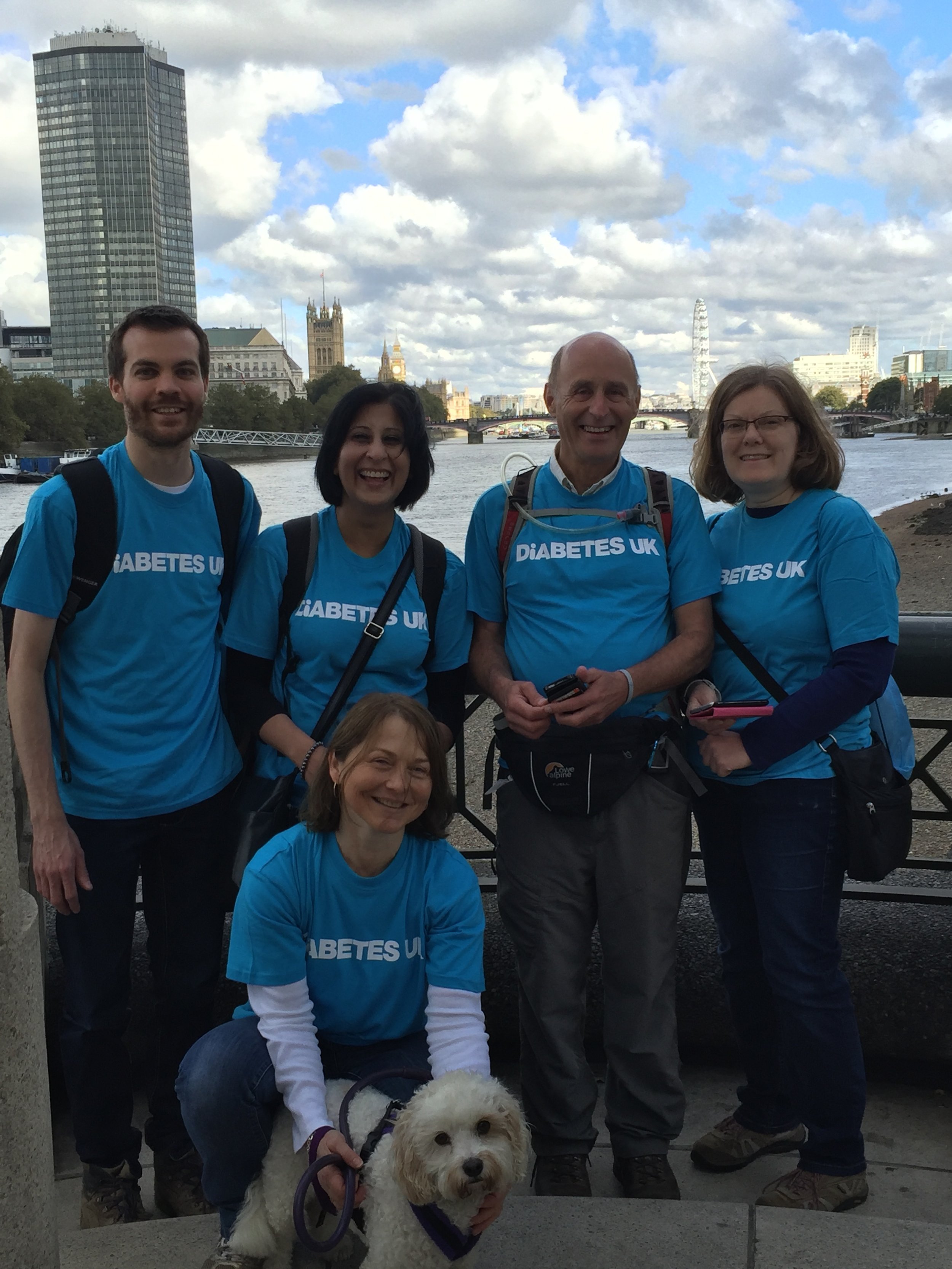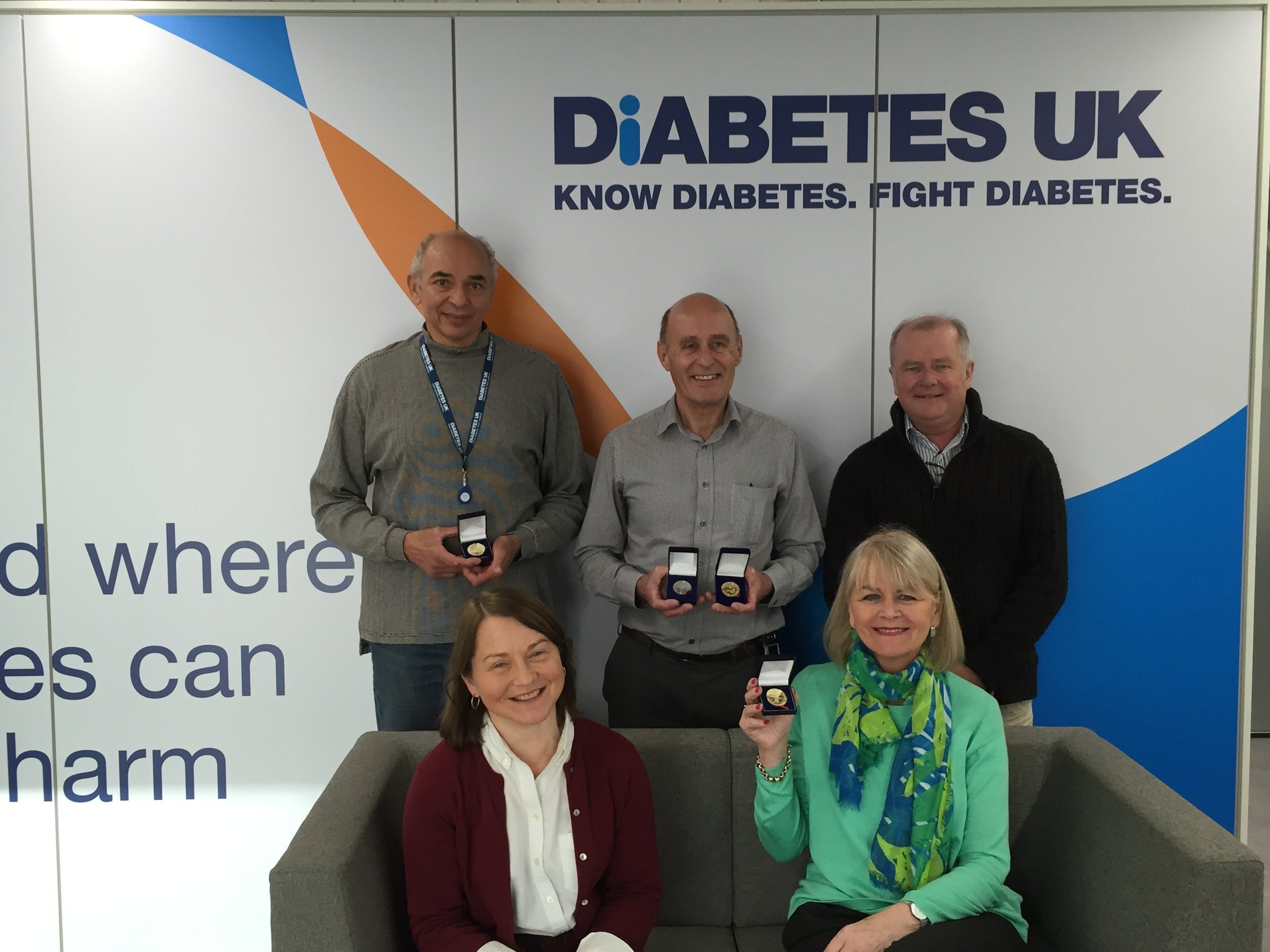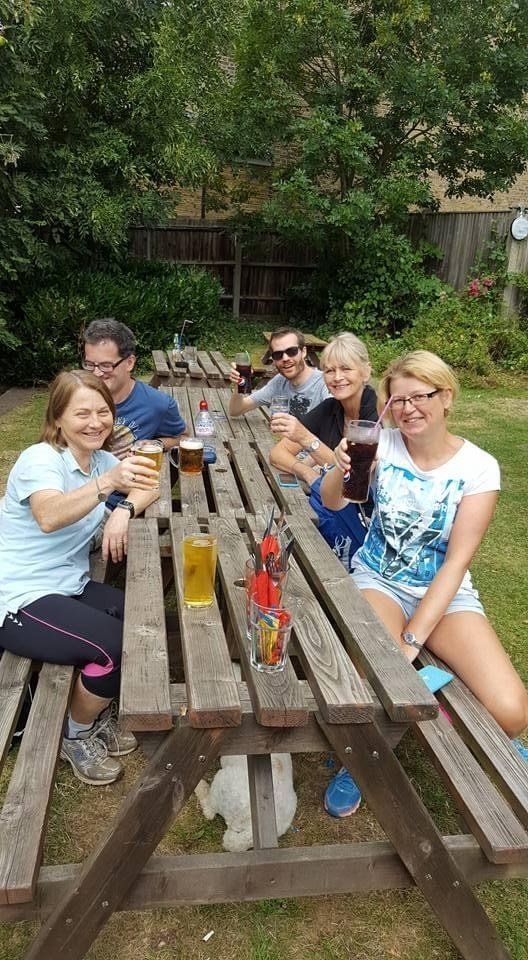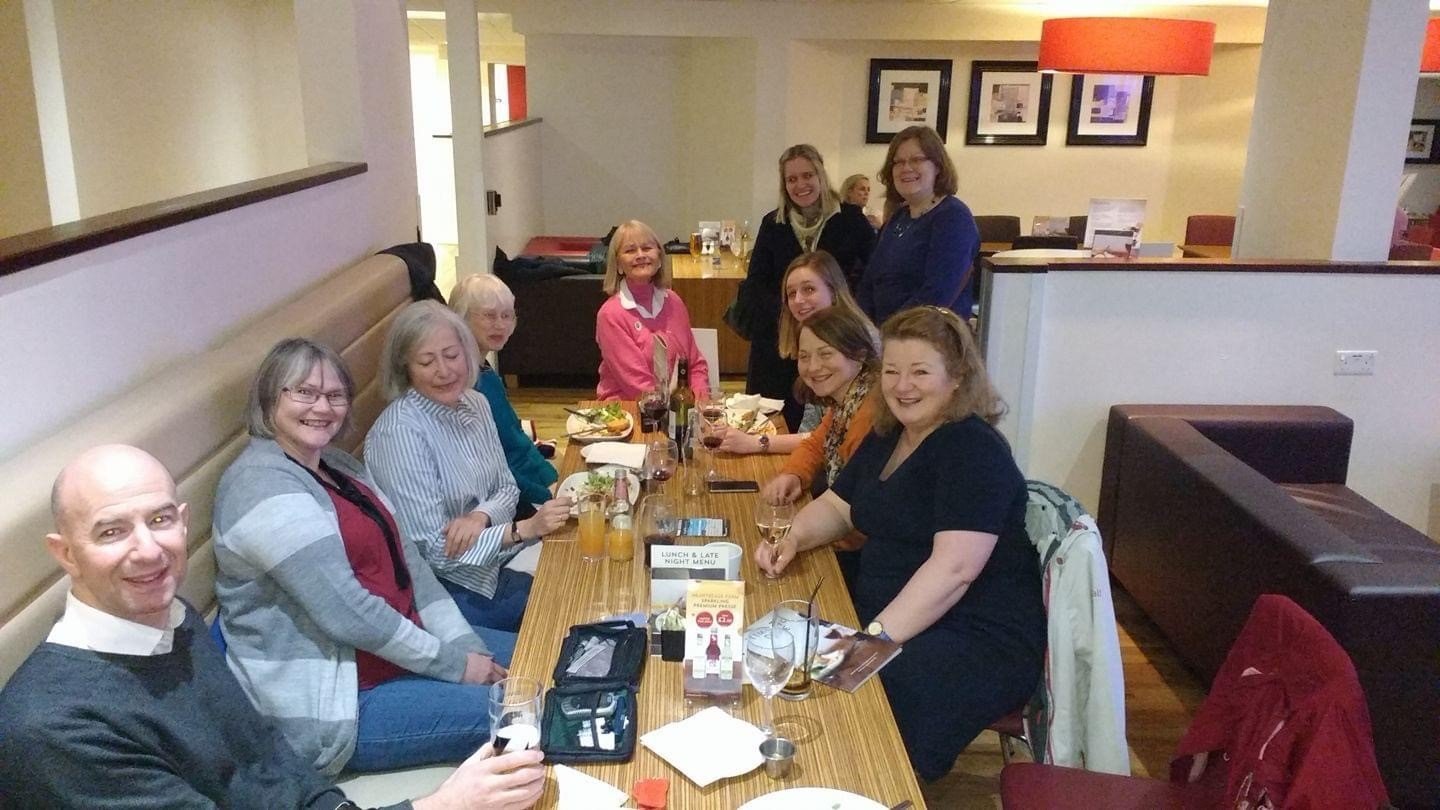4 weeks and counting: The Type 1 Community
Me: On a Saturday in May 2014, a few weeks into my 43rd year of diagnosis, a weight was lifted off my shoulders. I attended a JDRF Discovery Day¹ in London, primarily to listen to Professor Roman Hovorka talk about his research into closed loop technology. I was in a room surrounded by a mixture of adults diagnosed with type 1 and parents of children diagnosed with type 1. I knew no-one else there. It was the first time that I had ever been in a room full of so many people with a connection to type 1. I will always remember and feel quite surprised by the huge sense of relief it produced.
So, what about community connections made in my previous 42 years?
Mum: We knew of no other type 1 children when you were first diagnosed. There were no other parents we could talk to and exchange information with. The one time I tried joining a Diabetes support group I had located, I found it to be for adults diagnosed with type 2.
The only other children with type 1 that we met were those at the wonderful holiday camps organised by the British Diabetic Association (BDA), now Diabetes UK. Children attended from all over the country. The children’s camps were so important in enabling you to meet others living with type 1 and I hoped they would help you learn to become more independent.
Dad: We tried to take the view that Sarah could do everything that a child without diabetes could do. We would not accept any restrictions: everything was possible. Again, Diabetes UK were very helpful. They organised holiday camps for children with type 1, to help them to gain experience and confidence in giving their own injections and mastering the other aspects of managing their condition. We sent Sarah on one of the holiday camps and it was a great success. It provided valuable learning experiences, but, almost as important, it showed Sarah that there were other children with the same diagnosis: she was not alone.
Me: I attended my first children’s camp in 1973. We travelled from Manchester to Sussex by train. I clearly remember having a bad hypo on the train journey - one that left me feeling washed out and in need of quiet and sleep. Another mother and daughter were travelling some of the same route as us, sitting across the aisle on the train. The daughter wanted to talk to me but I was desperate for her to leave me alone, as I couldn’t muster any enthusiasm to respond to her, post hypo.
The highlight from the camp was winning a blue injection storage kit for my glass syringe, needles, insulin vials and antiseptic swabs. I am not sure that I could have explained at the age of eight, why this was so important to me but to have a compact storage case, that did not have an obvious medical look to it, felt very exciting. The design also felt revolutionary. The spring-loaded storage tube for the glass syringe ensured that, if I had cuts on my fingers, I suffered fewer stings than when I had to submerge the tips of my fingers in surgical spirit, using my previous syringe storage method. I did feel homesick, particularly at bedtime, but was grateful for the letters that Mum sent which I believe she must have started writing before I had left home, to ensure that I received them regularly while I was away.
Mum: I did manage to get you to do a few injections by yourself during your first year of diagnosis. It was a long and laborious process as you tried to pluck up courage to push the needle in – understandably because it was a daunting challenge for a seven year old. The children’s camp was transformational. You came back able to do your injections yourself and you never looked back. It also made you much more confident generally in being able to cope by yourself.
Me: My parents gave me a copy of the book “Sugar Mouse” for my first Easter after diagnosis. It was published in March 1973 and I am slightly surprised today by the strong emotions that it still creates. Looking through the book, I can see that there are a few issues with the story line but that was not something I noticed at the time. The synopsis states that “Sarah has more cause than most to bewail her lot, for she has been a diabetic for three years, ever since she was nine. The daily self-administered injection is the nastiest part of it, something Sarah feels she will never be able to learn to tolerate.”
The character Sarah was a valuable alter ego and I think allowed me to recognise that the feelings I had tried to express in hospital, concerning my dislike of injections and this new life that I now had to learn to cope with, were very normal. Here was someone else who felt exactly as I did. She could express my frustrations for me….
“I’m not going to have an injection!” said Sarah, and pulled the bedclothes over her head.
“Injections!” she shouted, suddenly popping her head out of the clothes. “I’m fed up with injections.”
“That’s all my life is, from one injection to the next!” ²
With no other type 1 contacts throughout most of my childhood, I created a special support group consisting of my alter ego Sarah, my doll Charlotte and Teddy. They were ‘companions’ enabling a certain mental calm. Charlotte and Teddy accompanied me on my annual inpatient hospital stays that lasted for a minimum 24 hour period, to allow blood glucose monitoring and more detailed observations of my treatment regime, to be undertaken. I did not dread these hospital stays. However, the experience was made better, knowing that it was one that I shared with my ‘companions’. The fact that I still have and value these three companions, shows how important I feel their presence was in managing the emotional side of the condition
In July 1978, I had another opportunity to attend a camp organised by Diabetes UK. Unlike the first camp, this was a holiday that I was keen to do. It was a week-long activity holiday held at the Calvert Trust in Keswick, where we would undertake hill walking, canoeing and sailing under the supervision of medical staff. I am sure that it offered Mum and Dad a much-needed break from the management of the condition but I also found that it allowed me valuable time to switch off. The medical staff took the responsibility for insulin dose adjustment, counting and adjusting carbohydrates to cope with my changing levels of activity, carrying hypo treatments and keeping a watchful eye on participants, allowing me to enjoy throwing myself into all of the activities while trusting them to provide a safety net. Fabulous!
After that second camp, I went for a very long time without contact with any other type 1s. I am sure I must have come across type 1s in daily life, but as type 1 is a hidden condition, I had no way of knowing and no opportunities to share experiences. And, if I am honest, I am not sure that I felt I needed a type 1 network – never having been a part of one, I didn’t know what I was missing.
I became aware of a sense of isolation however, as I entered the perimenopause and experienced greater difficulties in managing blood glucose levels. I knew several parents, of children diagnosed with type 1, through the infant and junior school networks locally, but no other adults living with type 1. One of these mothers, however, who was also a trained nurse, spent time talking to me about the advances that had been made in insulin pumps and showing me the one that her daughter was using. It was this conversation that encouraged me to ask to be given a pump to help with the perimenopausal management issues I was having. She was also the friend who introduced me to JDRF.
After I started to experience the perimenopausal management issues, I asked various health care practitioners at my hospital appointments whether others with type 1 experienced the same management issues that I was facing. My questions were met with silence. I have never understood why that was. I was not asking for specific patient details. I was looking for help. I hoped that the medics would have an understanding of other patient experiences, similar to mine, and would be able to offer suggestions for approaches to try to help manage the variability that I was experiencing.
Six years later, in April 2014, my husband Neil ran the London marathon raising funds for JDRF. He came back from the Friday evening check-in process, recounting an interesting conversation he had had with a person at the JDRF registration desk, someone wearing a continuous glucose monitor. This person fully recommended the Dexcom CGM system that he was using. I had been using a Medtronic insulin pump for four years at this stage and had self-funded a Medtronic CGM system for a year, in an attempt to gain a better understanding of my blood glucose variability. However, I found the system did not live up to expectations and so ceased to use it. I was intrigued about the Dexcom system, but was keen to speak to someone using the system, to find out more, before making a decision to self-fund.
Having booked to attend the JDRF Discovery Day the following month, I asked, as I registered, whether the organisers knew of anyone that I could speak to who wore a Dexcom CGM. I was introduced to Lis Warren. I can still picture where we sat in the middle of the room. She told me about a number of Facebook groups that organised in person meet-ups in London and recommended that I send a request to join. She introduced me to a number of other people, active in the type 1 community. Several presentations were given at the Discovery Day and I remember commenting, after one, about the difficulties, in my teenage years, in feeling that any moodiness I displayed was always attributable to the likelihood of my suffering from a low blood sugar rather than normal teenage volatility. There was a general murmur of agreement from the adult type 1s in the room. I had found my tribe!
Over the subsequent years, I have managed to link in to various events and type 1 groups providing camaraderie and support. I cannot stress sufficiently the huge emotional benefit that this has provided. It is not that I am suffering from any particular angst but, knowing that I am not alone, that the difficulties that I experience are common place - that I am not failing in my management of the condition – provides an element of acceptance. Gatherings of type 1 groups allow an opportunity to completely relax. I don’t need to hide high or low blood sugars and how they make me feel: I don’t need to conceal beeping technology to avoid people either fussing unnecessarily or making unthinking remarks of the “haven’t you got to grips with this yet?” variety.
I don’t wish type 1 on anyone but, given that others share the diagnosis, I am grateful that I know some of them, both from online and in-person contact. Knowing that they live with the same challenges that I experience is of great emotional support.
There are so many ways in which I have been able to join with others in the community – both in person and online, to learn, to share and to enjoy purely social meet-ups. I have loved:
The Facebook meet-up groups. These groups are administered by volunteers, organising in-person get-togethers for those with type 1. The conversation is not solely about type 1 and many laughs have been shared.
The Type 1 DIY Community. There are so many branches of this with amazing people who are very knowledgeable about creating new technological solutions to assist with the management of type 1. In the early days of using Dexcom, I attended an xDrip build party³. Two Dads with type 1 children were sharing their expertise surrounding the setup of alternative ways to access data from the CGM and I am grateful for the Sunday that they put aside to do so. Many type 1s continue to push the boundaries with their own tech solutions to managing type 1. Their generosity in sharing their practices and experiences, whether or not I choose to adopt them, is one of the things that makes the type 1 community so amazing.
Input Fusion events. Input, the UK diabetes technology advocacy charity, organised a number of annual events in different parts of the country, with a variety of speakers attending. Tech company representatives also took part, providing a wonderful opportunity to handle and ‘play’ with the pumps or monitoring devices that they produce. It can be frustrating when the NHS generally requires you to make a decision on an insulin pump, that will be worn for four years, when you have not had a chance to handle a device or compare it to others. (Input and JDRF merged in October 2018 and these fusion events continue under the JDRF:Input umbrella.)
The Animas sponsored Loughborough Sports and Exercise Weekend. This included a perfect mix of information giving, practical exercise sessions that allowed me to experiment with putting theory into practice, and evening socialising.
Diabetes UK and JDRF. These leading charities recognise the value of keeping the diabetes community informed about the latest research and offer speaker events that allow us to engage with both researchers and others in the community. I have enjoyed attending a number of JDRF Discovery Days. Pre-pandemic, Diabetes UK earmarked the Saturday at the end of their professional conference as a patient day, to listen to a number of key speakers from the conference deliver talks covering their research findings. Planning a short break around the March 2019 conference in Liverpool, I spent a lovely couple of days sightseeing with a good friend made through the type 1 community.
The Talking About Diabetes (TAD) talks created by Professor Partha Kar, Dr Catherine Peters and Professor Peter Hindmarsh. The three doctors specialise in diabetes and wanted to support and empower those with diabetes to achieve their potential and live well. Each year, a selection of speakers “share their experiences of living with type 1. The goal is to inspire us to think differently about diabetes, removing barriers and harnessing innovation and new technologies. We aim to generate discussion and new thinking through shared experience⁴.” I have been lucky enough to attend three of these events which are now subject to a ticket ballot (in which I have recently been unsuccessful) due to their popularity.
Numerous social and fundraising gatherings. Examples have included walking the London Bridges, a number of other walks and picnics in London, as well as the drinks after many of the more formal information-giving events.
I feel very lucky to have found the connections I have and recognise that so much of this was down to chance encounters. The person manning the JDRF registration desk for the April 2014 London Marathon played a pivotal role: it seems fitting that I don’t know who he was. I recognise that the strength of the type 1 community is a result of the generosity that so many people have shown, while wanting nothing in return – people diagnosed with type 1, their relatives and the health care professionals who also volunteer time over weekends to enable learning and connections to be made. I thank you all!
Notes
1. Juvenile Diabetes Research Foundation (JDRF) website; viewed January 2022
“JDRF Type 1 Diabetes Discovery Days are free events and a great opportunity to meet others with type 1, find out about the latest research progress, and hear inspirational talks from a range of speakers.”
https://jdrf.org.uk/type-1-diabetes-discovery-days-2/
2. The Sugar Mouse by John Branfield
Extract p7-8; ISBN 057501508X
Ebenezer Baylis & Son Ltd, 1973
3. Circles of Blue website; website viewed January 2022
#We Are Not Waiting thanks to #xDrip – Introduction; 11-Jan-15
Blog by Kevin Winchcombe
4. Talking About Diabetes (TAD) Talks
Information taken from Eventbrite registration site for 2022 event (postponed from 2020)
Eventbrite registrations; website viewed January 2022
https://www.eventbrite.co.uk/e/talking-about-diabetes-tadballot-2022-tickets-209722384297
5. Diabetes UK website; viewed January 2022
Diabetes UK Professional Conference – Insider Day
